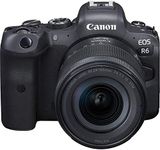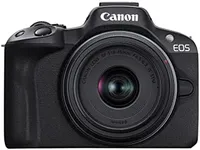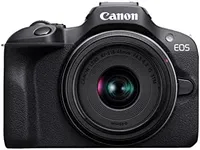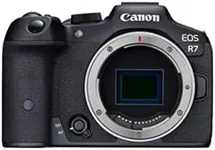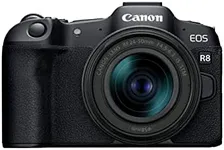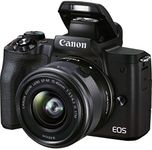Buying Guide for the Best Canon Mirrorless Cameras
Choosing a Canon mirrorless camera can be an exciting journey, especially with the variety of options available. The key to finding the best fit is to understand your own needs—whether you’re a beginner, an enthusiast, or a professional. Think about what you want to photograph or film, how portable you want your camera to be, and which features matter most to you. By focusing on the main specifications and understanding what they mean, you’ll be able to make a confident and informed decision.Sensor SizeThe sensor size in a camera determines how much light the camera can capture, which affects image quality, especially in low light. Canon mirrorless cameras typically come with either APS-C or full-frame sensors. APS-C sensors are smaller and make the camera lighter and more compact, which is great for travel and everyday use. Full-frame sensors are larger, offering better image quality, more detail, and improved performance in low light, making them ideal for serious photography or professional work. If you mostly shoot family events, travel, or casual photos, an APS-C sensor might be enough. If you want the best image quality for landscapes, portraits, or professional projects, consider a full-frame sensor.
MegapixelsMegapixels refer to the resolution of the camera’s sensor, or how many millions of pixels it can capture in a single image. More megapixels mean you can print larger photos or crop images without losing much detail. However, higher megapixels also mean larger file sizes. For most people, a camera with 20-24 megapixels is more than enough for everyday use and even for making large prints. If you plan to do a lot of cropping or need extremely detailed images for professional work, you might want a camera with more megapixels.
Autofocus SystemThe autofocus system helps the camera quickly and accurately focus on your subject. Canon mirrorless cameras offer different autofocus technologies, with some models having more focus points and advanced tracking features. A basic autofocus system is fine for still subjects or casual photography. If you plan to shoot fast-moving subjects like sports, wildlife, or children, look for a camera with a more advanced autofocus system that offers fast and reliable tracking.
Continuous Shooting SpeedContinuous shooting speed, measured in frames per second (fps), tells you how many photos the camera can take in one second when you hold down the shutter button. This is important if you want to capture action, such as sports or wildlife. Lower fps (around 5-7) is suitable for general photography, while higher fps (10 or more) is better for fast action. If you rarely shoot moving subjects, you don’t need to prioritize this feature.
Video CapabilitiesVideo capabilities refer to the camera�’s ability to record video, including resolution (such as 4K or Full HD), frame rates, and extra features like slow motion or microphone inputs. If you plan to shoot a lot of video, look for a camera that offers 4K recording and features like image stabilization and good autofocus in video mode. For casual video clips, Full HD is usually sufficient.
Viewfinder and LCD ScreenThe viewfinder and LCD screen are how you compose and review your photos. Some Canon mirrorless cameras have electronic viewfinders (EVF), which are helpful in bright sunlight and for precise framing. The LCD screen can be fixed, tilting, or fully articulating (flip-out), which is useful for shooting at different angles or for vlogging. If you often shoot from creative angles or want to take selfies or videos, a tilting or articulating screen is a good choice.
Size and WeightSize and weight affect how portable and comfortable the camera is to carry around. Smaller, lighter cameras are easier to take on trips or use for long periods, while larger cameras may offer more controls and better handling. If you travel a lot or want a camera for everyday use, a compact and lightweight model is ideal. If you prefer a more substantial grip and don’t mind extra weight, a larger camera might suit you better.
Lens CompatibilityLens compatibility refers to the types of lenses you can use with your camera. Canon mirrorless cameras use different mounts (like RF or EF-M), and the available lenses can vary. Some cameras can use adapters to work with older Canon lenses. If you already own Canon lenses, check if they’re compatible or if you’ll need an adapter. If you plan to expand your lens collection, consider the variety and availability of lenses for the camera system you choose.


